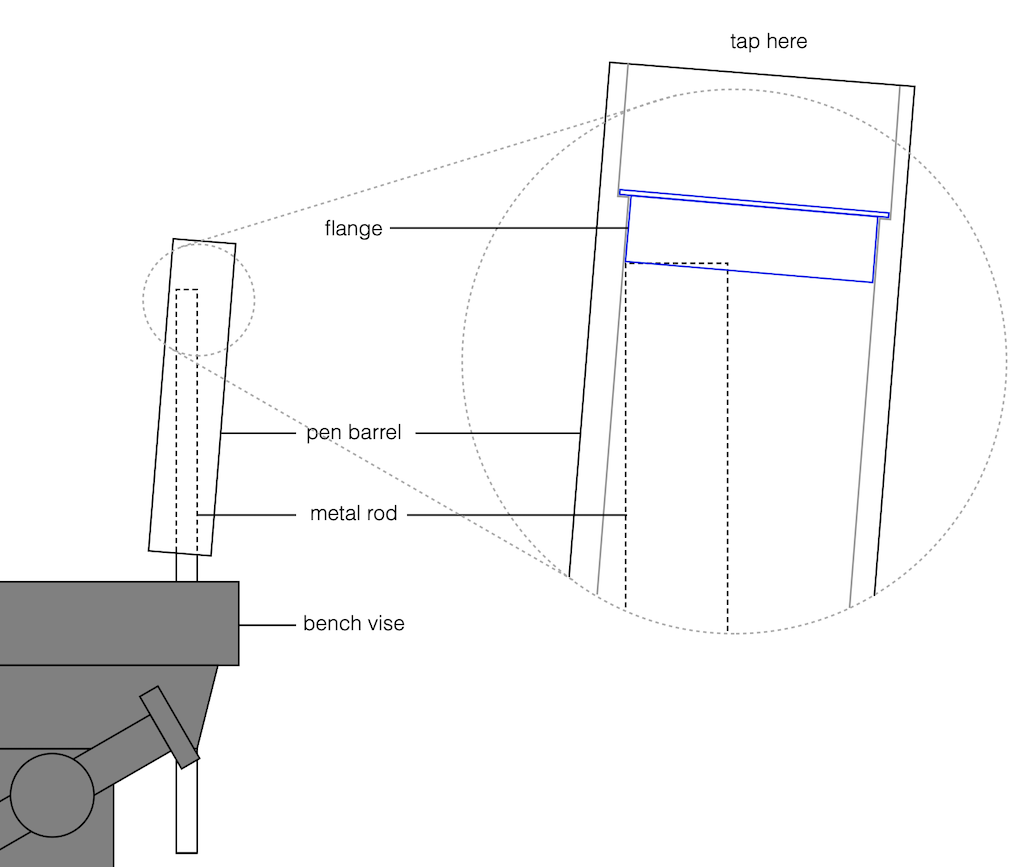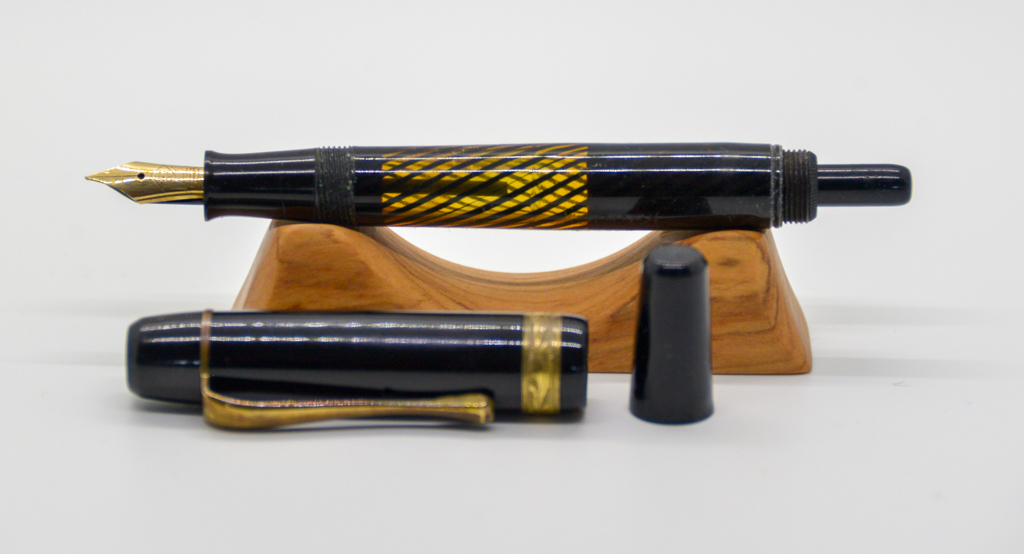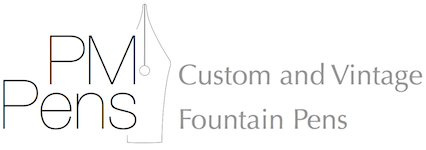Hoover 827
Hoover (along with Orion, London, and Gefion) was one of the sub-brands of the Danish Miller Pen Co., started by Johannes Iversen in 1908, although the Hoover name didn’t appear until the 1930s.
This pen has a “stretch vacumatic” filling system, which is similar to the Parker vacumatic system, if somewhat simpler in construction. An explanation of how this is assembled can be found on this page. However, I realised today when I was disassembling this pen that I haven’t written anything about how to get them apart. This is not necessarily a simple matter, since the metal ring that holds the rubber sac is typically difficult to get out of the pen.
My method is a little dangerous, but I haven’t broken a pen yet… I put a long, thin metal (or hardwood) rod in a bench vice, and insert it in the pen through the nib/section end of the barrel. The barrel is angled slightly so that the top of the rod comes up against the inside edge of the metal flange. I then GENTLY tap the top of the barrel with a rubber mallet, rotating the barrel on each tap. Of course, there is a possibility of either cracking the top of the barrel with the mallet or cracking the side of the barrel with the rod (since it’s on the wrong angle…)

Of course, this is done AFTER the threaded insert and the plunger have been removed. Since this typically requires heat and/or soaking, it’s a little easier to get the flange out.
In a best case, it’s not necessary to angle the rod, and it’s the same diameter as the interior diameter of the pen barrel. This is much safer than the angled method I’ve shown above. However, for this 827, it was not possible to get the section off, so I had to go in through the hole for the nib+feeder, which is much smaller than the interior of the barrel.

The nib is not stamped with the Hoover logo, but this is the second Hoover 827 I have with this same nib, which tells me that it’s original. Note that it’s interesting to compare this pen with the Miller 649 seen here.
The clip and cap band show signs of age, but the barrel is obviously in beautiful condition, as can be seen above. It’ll be interesting to see it with ink!
V2017123

